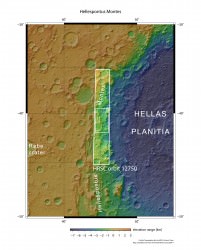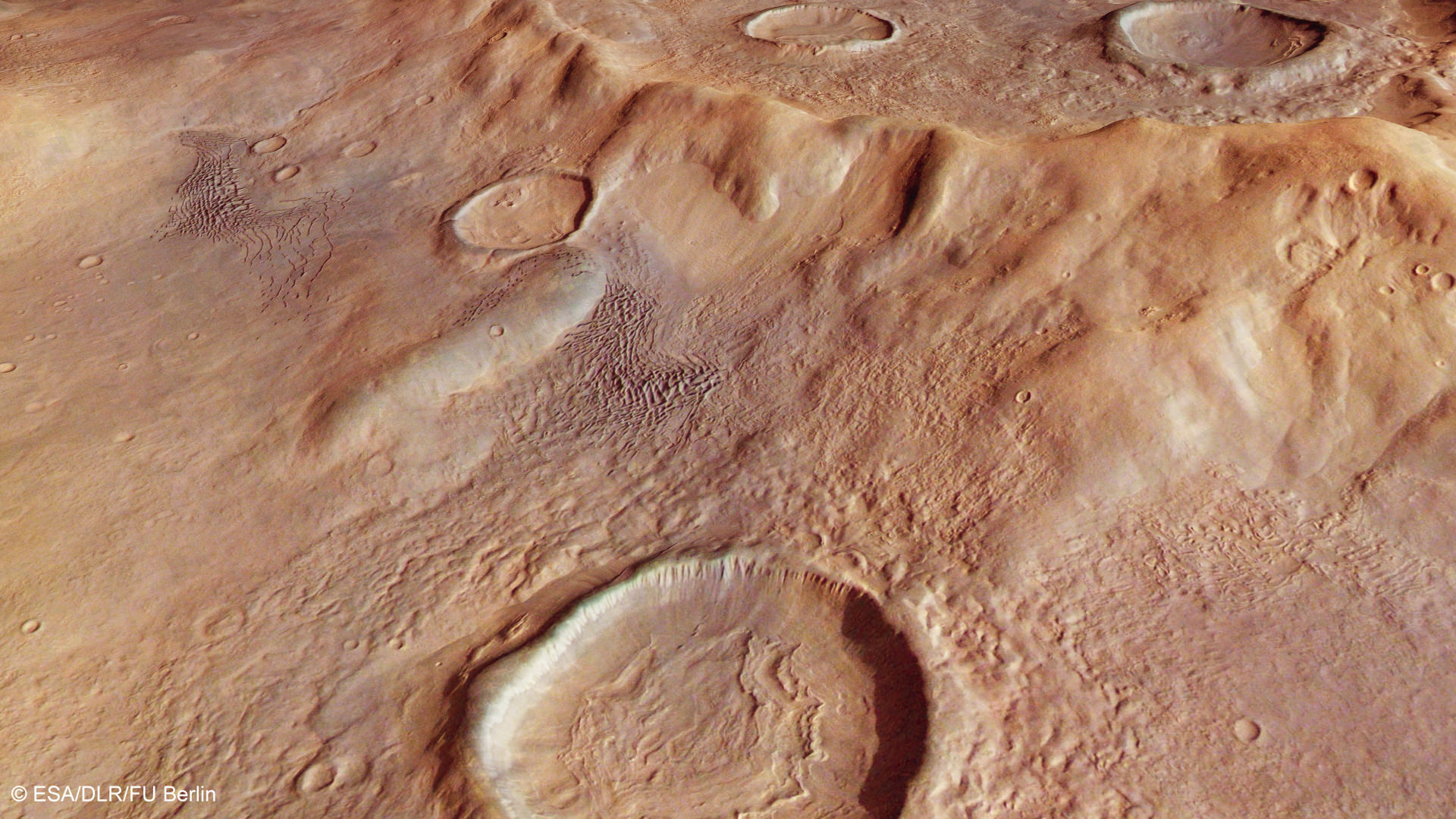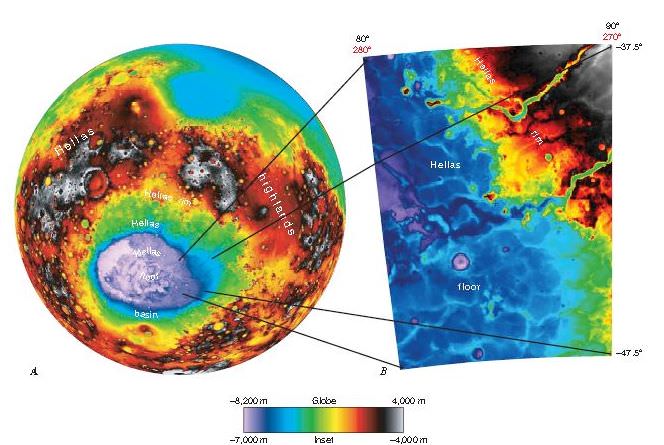Such great heights! A mountain chain peeks in the background of this new view of Hellas Basin, based on information taken by a European spacecraft circling the Red Planet.
Beyond the pretty picture is a tale of how snow behaved on the Martian surface, according to the European Space Agency. The vast basin is about half the size of Brazil.
The wrinkled view of that crater in front is a product of snowing and freezing that took place when the Martian surface was wetter, ESA said.

“During this period, snow fell and covered the surface and later moved downhill into the crater. Once inside the crater, the snow became trapped and soon covered by surface dust, before compacting to form ice. The number of concentric lines indicates many cycles of this process and it is possible that craters like these may still be rich in ice hidden beneath just tens of metres of surface debris.”
Additionally, the high hill chain in the back (called Hellespontus Montes) is a remnant of how Hellas basin was formed, the agency said.
“This feature is a product of the final stages of the formation of the vast Hellas impact basin itself, most likely as the basin walls – which were first pushed outwards by the extraordinary forces at work during the formation of the basin – later collapsed and sank inwards to create the observed stair-stepped shape.”
The image was taken by ESA’s Mars Express spacecraft, which is just one of several robotic emissaries circling the Red Planet.
Source: European Space Agency


